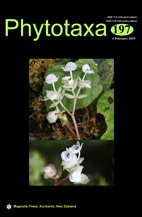Abstract
The prairie pothole region of North America is characterized by a large number of lakes and wetlands created during the last glacial retreat. These waterbodies are characterized by their generally small sizes (70% of waterbodies are less than 0.4 ha), high densities (as many as 40 waterbodies km −2) and elevated but variable conductivities, ranging between 230–70,000 µS cm−1. Although this region boasts a great number and diversity of habitats, few studies have investigated the diatom diversity present. Presented here are descriptions and illustrations of three new species from the genus Halamphora based on light microscope and scanning electron microscope observations. Halamphora pratensis was collected from Long Lake, Burleigh County, with a conductivity of 2187 µS cm−1, and appears to be most closely allied with the common freshwater H. veneta group within the genus. Halamphora pertusa and H. attenuata were collected from Salt Alkaline Lake, Kidder County, with an elevated conductivity of 9811 µS cm−1. Both of these taxa, although unique, exhibit some morphological similarity to several marine and estuarine species.

